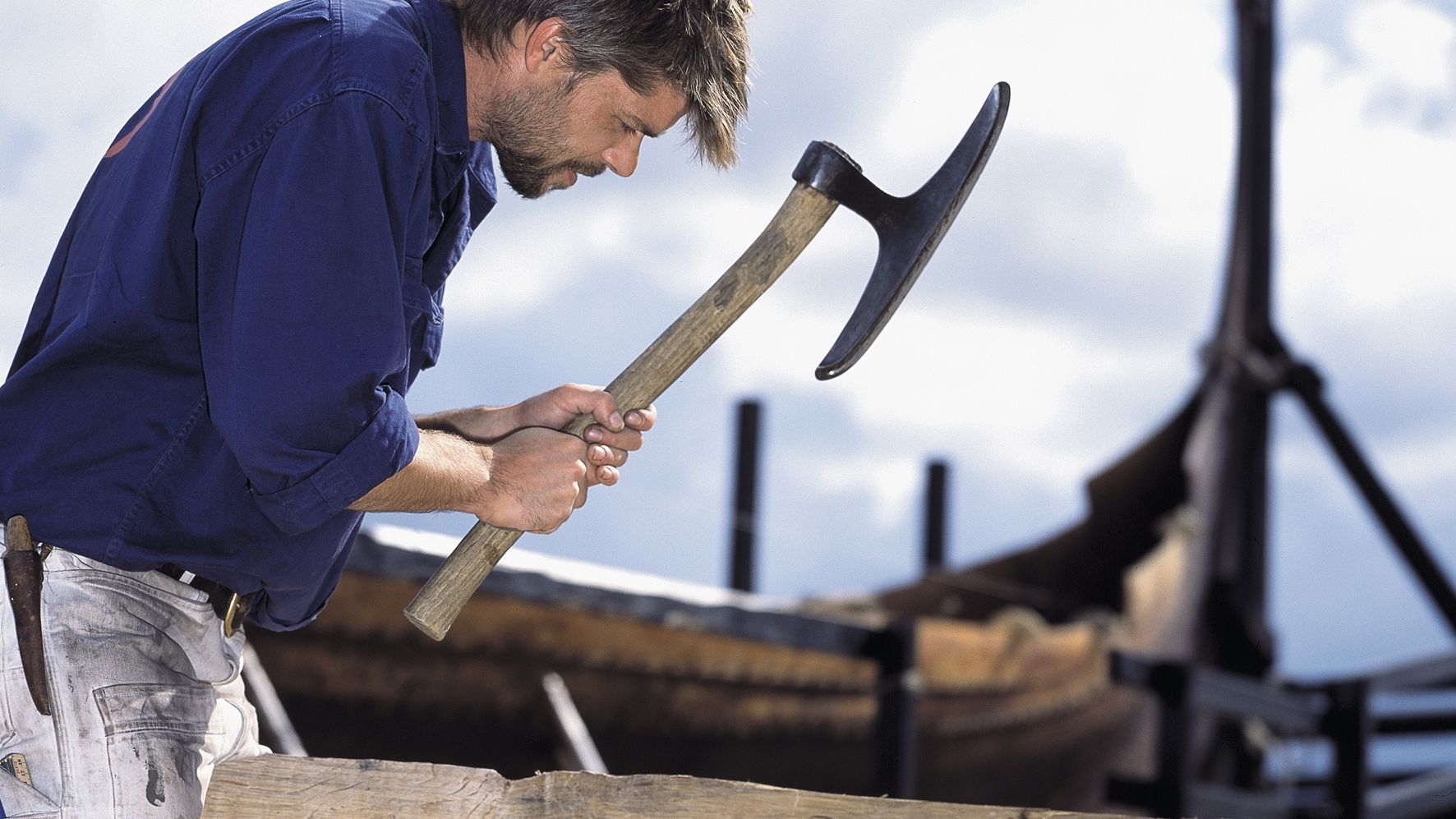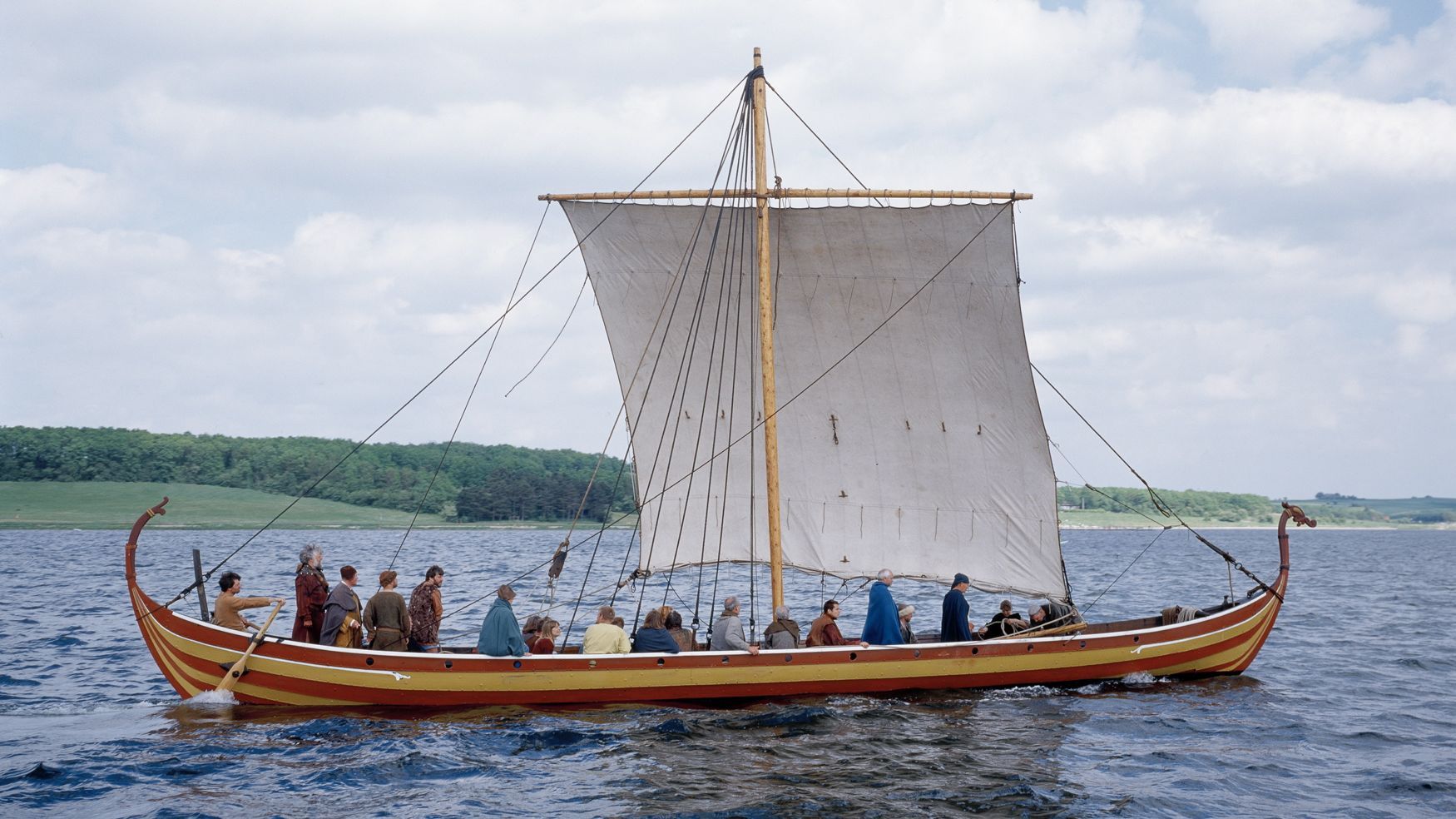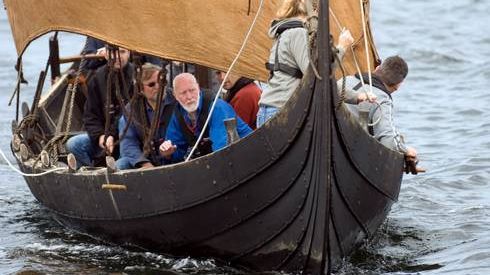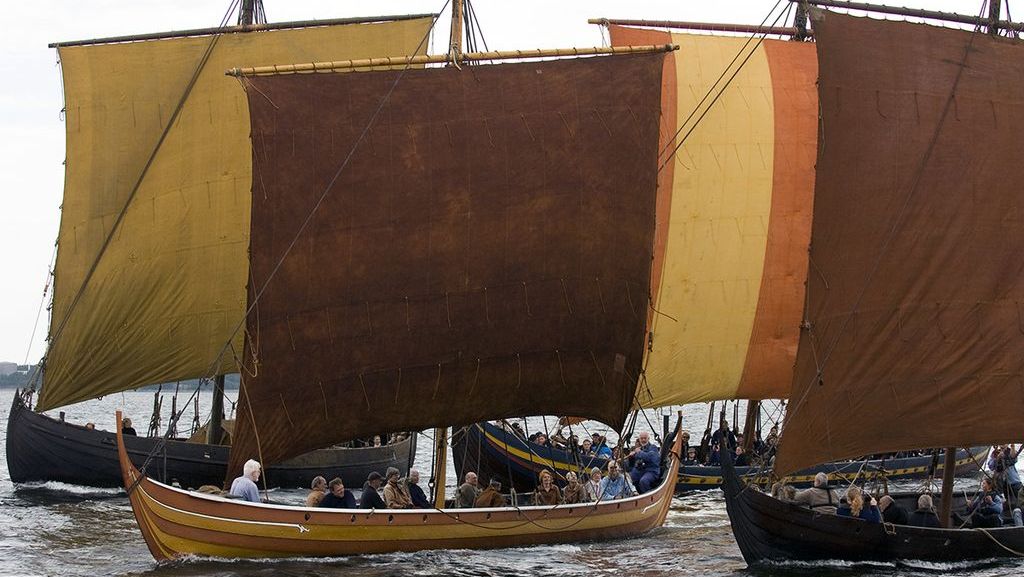Ottar 1999 - 2000
In 1999, the work on Ottar began, a reconstruction of the large ocean-going cargo ship from western Norway. During the building process the boatbuilder found some unusual and unidentifiable axe marks on a biti. The tool marks were recognized by a Norwegian as "sprett-telgjing". This is a special carving technique used when working in pine, and requires special axes. It leaves a particular pattern of axe marks, and was different from any technique that the boatbuilders had previously used. With this technique, the axe enters the wood at a slightly obtuse angle; the boatbuilder then relaxes his arm and lets the axe bounce back out of the wood.
Tools of the Viking Age
Building Ottar made the boatbuilders more interested in exploring the cutting techniques and tool marks found on the original ships. We learned more about how tools can be shaped, ground and used in different ways.
Today the museum has a fine collection of copies of Viking Age axes, planes, drills, profile scrapers, knives, chisels and hammers from all over the Nordic region.
Reconstruction of the Skuldelev 1 ship
Ottar is lying in the Museum Harbour. The reconstruction has robust, full forms and dark-tared wood. Ottar is a reconstruction of Skuldelev 1, which was a large ocean-going cargo ship.
» Skuldelev 1 is exhibited in the Viking Ship Hall...
Sprett-telgjing
In Norway sprett-telgjing is also found on the Viking Age Oseberg ship, stave churches and in houses from the Middle Ages. In Denmark the carving technique is found on the medieval 'Roskilde 5' ship.
» Read more about the Oseberg ship and the 'Roskilde 5' ship ...



